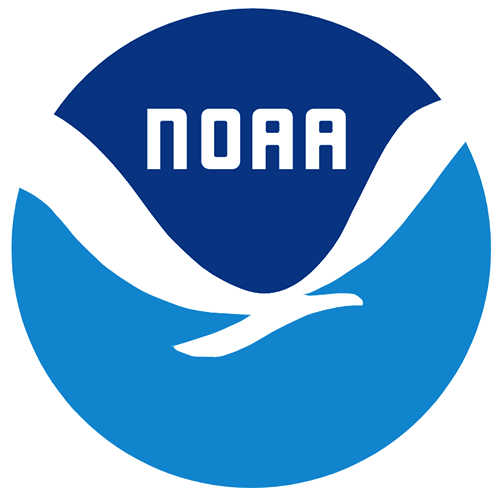2012 NOAA Lidar: American Samoa
Welcome Guest ( Sign In )
NOAA
 Light Detection and Ranging (LiDAR) data is remotely sensed high-resolution elevation data collected by an airborne collection
platform. This LiDAR dataset is a survey of American Samoa including the islands of Tutuila, Aunu'u, Ofu, Olosega, Ta'u and Rose Atoll.
The project area consists of approximately 75 square miles. The project design of the LiDAR data acquisition was developed
to support a nominal post spacing of 1.0 meter or better (1.0 meter GSD). GMR Aerial Surveys Inc. d/b/a Photo Science, Inc.
acquired 108 flight lines in 7 lifts between June 2012 and July 2012. This collection was for NOAA Office for Coastal Management (OCM).
The data collection was performed with a Beechcraft King Air 90 twin engine aircraft (tail number N87E) utilizing an Optech Gemini
sensor; collecting multiple return x, y, and z as well as intensity data. The data were provided to OCM, classified as:
Unclassified (1), Ground (2), Low Point (Noise) (7), Water (9), Breakline Edge (10), Overlap Unclassified (17) and Overlap Ground (18).
The classifications available for download from the Digital Coast are:
Unclassified (1), Ground (2), Low Point (Noise) 7, Water (9), Removed Ground (breakline edge) (10), and Overlap (12).
The collection conditions were cloud and fog-free between the aircraft and the ground; streams must be within their banks; and
low tide acquisition if at all possible.
Data voids within a single swath were avoided whenever possible. Acceptable void areas are caused by a water body;
areas of low near infrared (NIR) reflectivity such as asphalt or composition roofing and where appropriately filled in by another swath.
Unfortunately, during the LiDAR acquisition there were a few mountain peaks where the clouds never lifted high enough to collect LiDAR.
In order to post process the LiDAR data to meet task order specifications, Photo Science, Inc. established control points that
were used to calibrate the LiDAR to known ground locations established on Tutuila. Please see the survey report for more details on
ground control point collection at:
https://noaa-nos-coastal-lidar-pds.s3.amazonaws.com/laz/geoid12a/2490/supplemental/PhotoScience-AmSam_PostFlightAcquisitionReport_FINAL.pdf
The dataset was developed based on a horizontal projection/datum of UTM NAD83 (PACP00), UTM Zone 2, meters. The vertical datum
used during the collection, varied by island. NAVD88 (ASVD02), meters was used for the island of Tutuila (and Aunu'u). NAVD1988
(GEOID09), meters was used for the islands of Ofu, Olosega and Tau. Rose atoll was adjusted from Ellipsoid heights to a mean
low water (MLW) datum. Upon receipt of the data, the NOAA Office for Coastal Management converted the lidar data to geographic
coordinates and ellipsoid heights using GEOID09. Rose Atoll data were converted to geographic coordinates and to ellipsoid heights
using the MLW correction value of 22.8 m. Conversion is for data storage and Digital Coast provisioning purposes. LiDAR data was
collected in RAW flightline swath format and processed to create Classified LAS 1.2 files.
This data set is an LAZ (compressed LAS) format file containing LIDAR point cloud data.
Light Detection and Ranging (LiDAR) data is remotely sensed high-resolution elevation data collected by an airborne collection
platform. This LiDAR dataset is a survey of American Samoa including the islands of Tutuila, Aunu'u, Ofu, Olosega, Ta'u and Rose Atoll.
The project area consists of approximately 75 square miles. The project design of the LiDAR data acquisition was developed
to support a nominal post spacing of 1.0 meter or better (1.0 meter GSD). GMR Aerial Surveys Inc. d/b/a Photo Science, Inc.
acquired 108 flight lines in 7 lifts between June 2012 and July 2012. This collection was for NOAA Office for Coastal Management (OCM).
The data collection was performed with a Beechcraft King Air 90 twin engine aircraft (tail number N87E) utilizing an Optech Gemini
sensor; collecting multiple return x, y, and z as well as intensity data. The data were provided to OCM, classified as:
Unclassified (1), Ground (2), Low Point (Noise) (7), Water (9), Breakline Edge (10), Overlap Unclassified (17) and Overlap Ground (18).
The classifications available for download from the Digital Coast are:
Unclassified (1), Ground (2), Low Point (Noise) 7, Water (9), Removed Ground (breakline edge) (10), and Overlap (12).
The collection conditions were cloud and fog-free between the aircraft and the ground; streams must be within their banks; and
low tide acquisition if at all possible.
Data voids within a single swath were avoided whenever possible. Acceptable void areas are caused by a water body;
areas of low near infrared (NIR) reflectivity such as asphalt or composition roofing and where appropriately filled in by another swath.
Unfortunately, during the LiDAR acquisition there were a few mountain peaks where the clouds never lifted high enough to collect LiDAR.
In order to post process the LiDAR data to meet task order specifications, Photo Science, Inc. established control points that
were used to calibrate the LiDAR to known ground locations established on Tutuila. Please see the survey report for more details on
ground control point collection at:
https://noaa-nos-coastal-lidar-pds.s3.amazonaws.com/laz/geoid12a/2490/supplemental/PhotoScience-AmSam_PostFlightAcquisitionReport_FINAL.pdf
The dataset was developed based on a horizontal projection/datum of UTM NAD83 (PACP00), UTM Zone 2, meters. The vertical datum
used during the collection, varied by island. NAVD88 (ASVD02), meters was used for the island of Tutuila (and Aunu'u). NAVD1988
(GEOID09), meters was used for the islands of Ofu, Olosega and Tau. Rose atoll was adjusted from Ellipsoid heights to a mean
low water (MLW) datum. Upon receipt of the data, the NOAA Office for Coastal Management converted the lidar data to geographic
coordinates and ellipsoid heights using GEOID09. Rose Atoll data were converted to geographic coordinates and to ellipsoid heights
using the MLW correction value of 22.8 m. Conversion is for data storage and Digital Coast provisioning purposes. LiDAR data was
collected in RAW flightline swath format and processed to create Classified LAS 1.2 files.
This data set is an LAZ (compressed LAS) format file containing LIDAR point cloud data.
